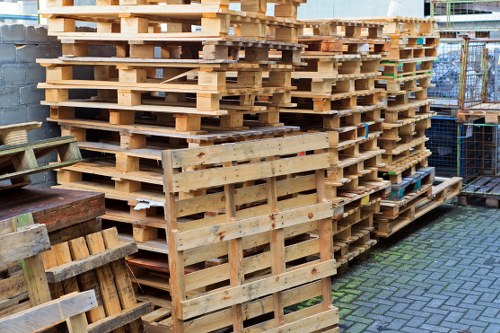Understanding Flat Clearance in Crook Log

Flat clearance is a crucial aspect for drivers, particularly in residential areas like Crook Log. It ensures that vehicles can navigate safely without causing obstructions or accidents. In Crook Log, maintaining proper flat clearance is essential for both everyday commutes and emergency situations.
Residents often encounter various challenges related to flat clearance, especially in areas with narrow roads and tight parking spaces. Understanding the local regulations and best practices can help mitigate these issues, ensuring a smoother driving experience for everyone.
Moreover, flat clearance is not just about the physical space a vehicle occupies. It also encompasses the height and width restrictions that are in place to prevent accidents and ensure that all vehicles can pass through without hindrance.
The Importance of Flat Clearance

Flat clearance plays a significant role in road safety. Proper clearance prevents collisions with structures like overhangs, low bridges, and parked vehicles. In Crook Log, where some roads are older and not designed for modern traffic, adhering to flat clearance guidelines is vital.
For commercial vehicles, such as delivery trucks and service vehicles, maintaining flat clearance ensures that they can operate efficiently without causing disruptions. Local businesses rely on these vehicles for their daily operations, making flat clearance a key factor in business continuity.
Additionally, emergency services depend on clear routes to respond promptly. Any obstruction due to inadequate flat clearance can delay critical responses, affecting the safety and well-being of the community.
Regulations and Standards

Crook Log follows specific regulations to maintain flat clearance standards. These rules are designed to accommodate a variety of vehicles, ensuring that all drivers can navigate the area safely. It's important for residents and businesses to be aware of these regulations to avoid fines and penalties.
The local council regularly updates these standards to reflect the changing infrastructure and vehicle types. Staying informed about these updates helps in planning and adjusting to new requirements, ensuring compliance and safety.
Moreover, educational programs and signage are used to inform the public about flat clearance requirements. These initiatives aim to promote awareness and encourage responsible driving behaviors among all road users.
Challenges in Maintaining Flat Clearance

One of the primary challenges in maintaining flat clearance in Crook Log is the narrowness of some streets. Limited space can make it difficult for larger vehicles to pass through without encroaching on sidewalks or adjacent properties.
Another challenge is the presence of older infrastructure. Buildings, bridges, and other structures might not have been designed with modern vehicle sizes in mind, leading to potential clearance issues.
Weather conditions also play a role. Snow, ice, and heavy rains can obscure signage and create temporary obstructions, making it harder to maintain proper flat clearance during adverse weather.
Solutions and Best Practices

To address these challenges, Crook Log has implemented several solutions. Regular maintenance of roadways and infrastructure helps to identify and rectify clearance issues promptly. This proactive approach minimizes disruptions and enhances overall safety.
Community engagement is another key strategy. Residents are encouraged to report any clearance-related problems, allowing authorities to respond swiftly and effectively. This collaborative effort fosters a safer and more efficient driving environment.
Additionally, investing in modern infrastructure can alleviate many of the existing clearance challenges. Upgrading roads, bridges, and other structures ensures that they meet current standards and can accommodate a variety of vehicles without issue.
Impact on Local Businesses
Local businesses in Crook Log heavily rely on efficient transportation and logistics. Proper flat clearance ensures that delivery trucks and service vehicles can operate smoothly, reducing delays and increasing productivity.
Moreover, businesses benefit from the overall safety and accessibility that come with good flat clearance. Customers are more likely to visit areas where parking and navigation are hassle-free, contributing to the success of local enterprises.
Additionally, reduced vehicle obstructions can lead to fewer accidents, lowering insurance costs and minimizing potential liabilities for businesses operating in the area.
Community Feedback and Involvement
The involvement of the community is essential in maintaining flat clearance standards. Feedback from residents provides valuable insights into specific issues and areas that require attention. This input helps local authorities prioritize and address the most pressing concerns.
Workshops and meetings are organized to discuss flat clearance topics, allowing for open dialogue between residents and officials. These gatherings foster a sense of ownership and responsibility among community members, promoting a collective effort towards safety and efficiency.
Furthermore, educating the younger generation about the importance of flat clearance ensures long-term adherence to safety standards. Schools and local organizations play a pivotal role in disseminating this knowledge, shaping future responsible drivers.
Technological Advancements
Advancements in technology have provided new tools for managing flat clearance. Smart sensors and monitoring systems can detect clearance issues in real-time, allowing for immediate response and resolution.
Additionally, digital mapping and navigation apps incorporate flat clearance data to guide drivers through optimal routes. This integration helps prevent accidents and ensures that vehicles remain compliant with local regulations.
Automated enforcement cameras are another technological innovation used to monitor flat clearance adherence. These systems help enforce regulations consistently, deterring violations and promoting a culture of compliance.
Future Outlook
Looking ahead, Crook Log aims to continue improving flat clearance standards through ongoing infrastructure upgrades and community initiatives. Embracing sustainable practices and innovative technologies will be key to maintaining an efficient and safe driving environment.
Collaboration with neighboring areas will also play a significant role in enhancing flat clearance. By working together, neighboring communities can share resources and strategies, leading to more comprehensive and effective solutions.
Ultimately, the goal is to create a seamless and safe transportation network that meets the needs of all residents and businesses in Crook Log and its surrounding areas.
Conclusion
Flat clearance is a vital aspect of urban planning and road safety in Crook Log. By understanding its importance, adhering to regulations, and actively addressing challenges, the community can ensure a safe and efficient environment for all. Continuous improvement and community involvement are essential in maintaining high standards of flat clearance, benefiting both residents and local businesses alike.
Nearest Areas to Crook Log
- Arnos Grove: Located just north of Crook Log, Arnos Grove offers excellent amenities and easy access to major highways.
- Oakthorpe: A neighboring area known for its quiet streets and community parks, perfect for families.
- Soonwood: Situated to the east, Soonwood provides additional shopping and dining options for residents.
- Enfield Lock: West of Crook Log, Enfield Lock is a hub for local businesses and public services.
- Greenacres: Southeast of Crook Log, Greenacres boasts beautiful green spaces and recreational facilities.
- Ponders End: Another adjacent area offering diverse housing options and community centers.
- Small Heath: Located nearby, Small Heath is known for its vibrant local markets and cultural events.
- Winchmore Hill: To the southwest, Winchmore Hill features scenic parks and historical landmarks.
- Freezywater: Northwest of Crook Log, Freezywater provides a mix of residential and commercial properties.
- Lower Edmonton: A short distance away, Lower Edmonton offers additional transportation links and urban facilities.
Frequently Asked Questions
1. What is flat clearance?
Flat clearance refers to the unobstructed space required for vehicles to pass safely without hitting structures like overhangs or parked cars. It includes height, width, and length dimensions to prevent accidents.
2. Why is flat clearance important in Crook Log?
In Crook Log, many roads are narrow and have older infrastructure. Proper flat clearance ensures safe navigation for all vehicles, reduces accidents, and facilitates smooth traffic flow.
3. What are the common flat clearance issues in Crook Log?
Common issues include low bridges, tight parking spaces, and overhanging structures. These can cause vehicles to scrape or become obstructed, leading to potential accidents.
4. How can residents help maintain flat clearance standards?
Residents can report any clearance issues to local authorities, follow parking regulations, and participate in community meetings or workshops focused on road safety.
5. Are there any technological solutions for monitoring flat clearance?
Yes, advancements like smart sensors, automated enforcement cameras, and digital mapping tools help monitor and manage flat clearance in real-time, enhancing safety and compliance.

